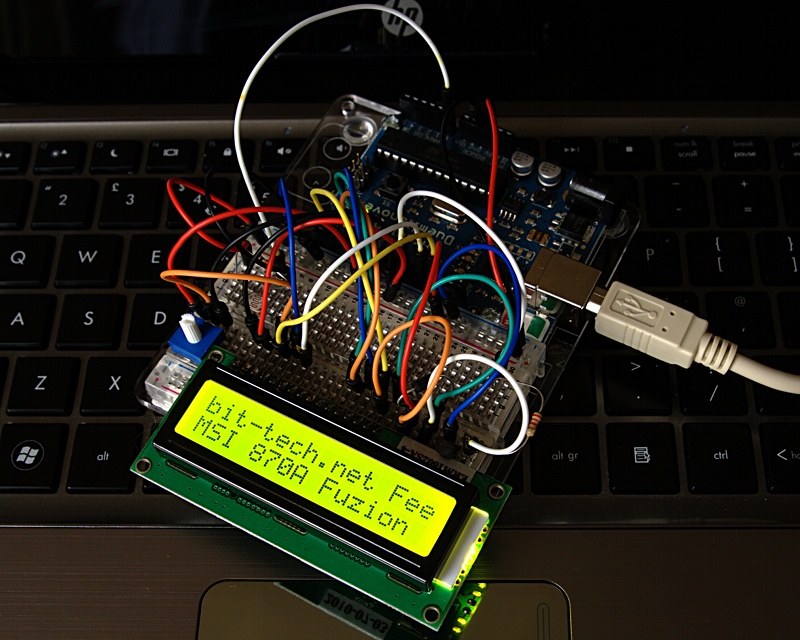 The aRSSduino is a simple project for the Arduino microcontroller, designed to display RSS feed entries on a 16×2 LCD. It’s still in the early stages, with the following outstanding:
The aRSSduino is a simple project for the Arduino microcontroller, designed to display RSS feed entries on a 16×2 LCD. It’s still in the early stages, with the following outstanding:
- To Do: Support for larger LCDs
- To Improve: Better UTF-8 character handling
- To Do: Multiple RSS feed support
For now, however, it’s a pretty neat hack – and an alternative back-end allows it to display Twitter @ replies instead, with the person’s username on the top line of the display and the message below.
The aRSSduino relies on a USB connection between the Arduino and the host PC – it’s not a stand-alone project. Currently, the Python back-end is written to run on a Linux-based host – although it should be relatively simple to port to Windows, I have no plans to do so at present.
You can download the project source code – both for the Arduino sketch and for the Python-based back-end here. If you improve upon it, let me know!
